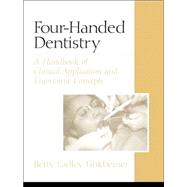
BETTY LADLEY FINKBEINER, CDA, RDA, MS, is a graduate of the University of Michigan School of Education. She is Chairperson of the Dental Assisting Program at Washtenaw Community College in Ann Arbor, Michigan. She has served in this position for three decades. As chairperson of the Dental Assisting Program, she has created a series of on-line dental assistant courses for on-the-job trained dental assistants to obtain professional credentials.
Betty worked in private practice for the late Joseph Ellis, DDS, in Grand Rapids, Michigan, before entering academics. A life member of the ADAA, Betty has served as a consultant to the Dental Assisting National Board. In 1999, she was appointed by the Governor of Michigan to the Michigan Board of Dentistry.
She has authored articles in professional journals and co-authored several textbooks including Practice Management for the Dental Team, Comprehensive Dental Assisting: A Clinical Approach, and Review of Comprehensive Dental Assisting. She has co-authored videotape productions, Medical Emergencies for the Dental Team, Four-Handed Dentistry: An Ergonomic Concept, and Infection Control for the Dental Team.
In addition to her current responsibilities, she provides consulting services to private dental offices in practice management and four-handed dentistry and presents seminars on Ergonomics in Four-Handed Dentistry as well as Fair and Equitable Salary Negotiations for Dental Auxiliaries.
The New copy of this book will include any supplemental materials advertised. Please check the title of the book to determine if it should include any access cards, study guides, lab manuals, CDs, etc.
The Used, Rental and eBook copies of this book are not guaranteed to include any supplemental materials. Typically, only the book itself is included. This is true even if the title states it includes any access cards, study guides, lab manuals, CDs, etc.